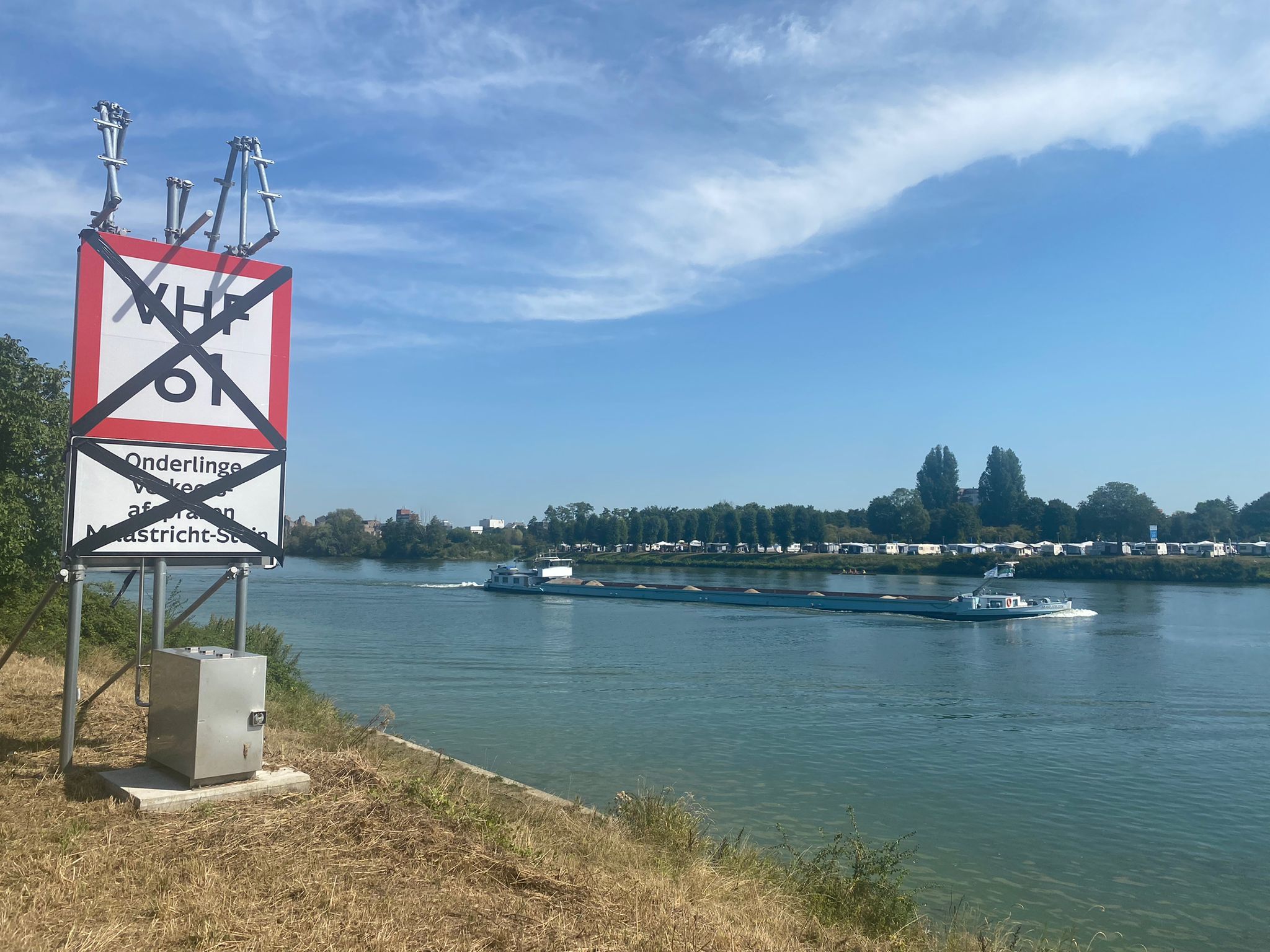Deze cache kunt u vinden langs de Maas. De cache, genaamd 'Kanaaldijk' verwijsd naar vroeger toen hier ook nog een kanaal liep (parallel aan de Maas). Dit kanaal liep van Luik tot aan Maastricht, en werd ongeveer in 1969 gedempt.
This cache can be found along the Maas. The cache, called 'Kanaaldijk', refers to the past when a canal also ran here (parallel to the Maas). This canal ran from Liège to Maastricht, and was filled in about 1969.
NL:
Geschiedenis kanaal Maastricht Luik
Het kanaal Maastricht Luik was een kanaal tussen de twee plaatsen. Het maakte een verbinding tussen de Maas bij Luik, en de Zuid Willemsvaart in het Bassin van Maastricht. Het kanaal werd tussen 1845 en 1850 aangelegd.
De verbinding maakte deel uit van de scheepvaartverbinding tussen Luik naar Antwerpen. Het sloot in Maastricht immers aan op de bestaande Kempische kanalen. Het liep parallel aan de Maas, maar sneed enkele bochten en ondiepten van deze rivier af. Bovendien kregen schippers dankzij het kanaal niet meer te maken met wisselende waterstanden zoals op de Maas.
Oorspronkelijk telde het kanaal zes sluizen, namelijk in Coronmeuse, een dubbele sluis bij Haccourt Devant le Pont, Groot Ternaaien, Klein Ternaaien, in Maastricht bij de Sint Servaasbrug en bij het Bassin. De sluizen bij Haccourt, Groot Ternaaien verdwenen toen de kanaalbedding grotendeels werd opgenomen in het Albertkanaal. Om de doorsnijding van het Plateau van Caestert zo ondiep mogelijk te maken werd dit gedeelte toen op maximale hoogte gebracht. De oude sluis van Klein Ternaaien verloor haar functie toen de twee nieuwe kleine sluizen van Klein Ternaaien werden gebouwd om het grotere hoogteverschil naar het nieuwe Albertkanaal te overbruggen.
Nu het Albertkanaal de vaart tussen Luik en Antwerpen rond Maastricht leidde, werd de verbinding met het Bassin overbodig. De bevolking van Maastricht was maar al te blij dat het de naar eigen zeggen "vuile" vaart kon dempen. Dat gebeurde in de jaren 1963-1967 met grind dat rechtstreeks uit de Maas kwam. Hierbij werden overblijfselen van de Romeinse brug gevonden.
Nadat het kanaal gedempt was werd op het tracé de Maasboulevard aangelegd. De staatnamen "Hoge" en "Lage Kanaaldijk" aan weerszijden hiervan herinneren aan de voormalige jaagpaden. Ter vervanging van de verbinding tussen het Albertkanaal en Maastricht werd het kanaal van Ternaaien gegraven.

ENG:
History canal Maastricht Liège
The canal Maastricht Liège was a canal between the two places. It made a connection between the Maas at Liège, and the Zuid Willemsvaart in the Bassin of Maastricht. The canal was constructed between 1845 and 1850.
The connection was part of the shipping connection between Liège and Antwerp. After all, in Maastricht it connected to the existing Kempen canals. It ran parallel to the Meuse, but cut some bends and shallows off this river. Moreover, thanks to the canal, skippers no longer had to deal with fluctuating water levels as on the Maas.
Originally the canal had six locks, namely in Coronmeuse, a double lock at Haccourt Devant le Pont, Groot Ternaaien, Klein Ternaaien, in Maastricht at the Sint Servaasbrug and at the Bassin. The locks at Haccourt, Groot Ternaaien disappeared when the canal bed was largely incorporated into the Albert Canal. In order to make the intersection of the Plateau van Caestert as shallow as possible, this section was then raised to maximum height. The old lock at Klein Ternaaien lost its function when the two new small locks at Klein Ternaaien were built to bridge the greater difference in height to the new Albert Canal.
Now that the Albert Canal led the canal between Liège and Antwerp around Maastricht, the connection with the Bassin became superfluous. The people of Maastricht were only too happy that it could dampen what they say was "dirty" momentum. This happened in the years 1963-1967 with gravel that came directly from the Meuse. Remains of the Roman bridge were found here.
After the canal was filled in, the Maasboulevard was constructed on the route. The state names "Hoge" and "Lage Kanaaldijk" on either side of this remind of the former towpaths. The Ternaaien Canal was dug to replace the connection between the Albert Canal and Maastricht.